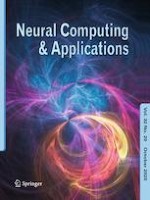04-04-2018 | S.I.: Advances in Bio-Inspired Intelligent Systems
Towards robust voice pathology detection
Investigation of supervised deep learning, gradient boosting, and anomaly detection approaches across four databases
Published in: Neural Computing and Applications | Issue 20/2020
Log inActivate our intelligent search to find suitable subject content or patents.
Select sections of text to find matching patents with Artificial Intelligence. powered by
Select sections of text to find additional relevant content using AI-assisted search. powered by
